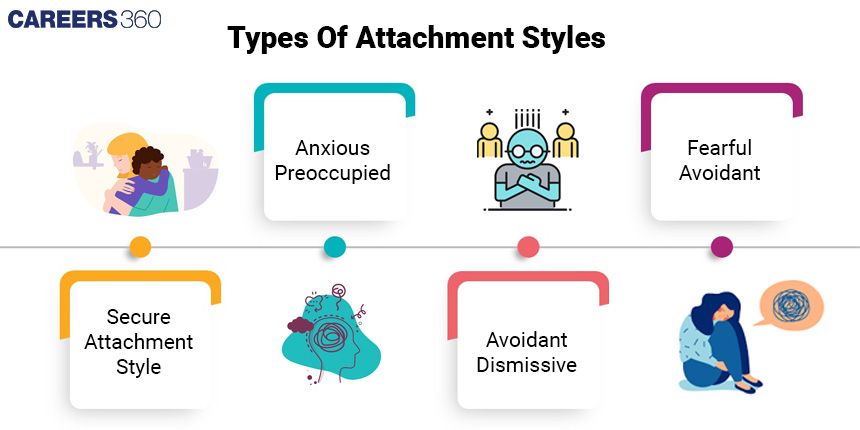Understand Your Attachment Style And Learn How You Can Reform Your Relationships
Researchers have identified four distinct attachment styles, each of which can manifest in behaviour patterns that affect our ability to develop intimacy and trust in relationships. Recognising your attachment style can provide insight into your relationship patterns and enable you to take steps toward improving your connections with others. So let’s delve into the characteristics of each attachment style and find out how to cultivate healthy relationships.

What Is The Attachment-Style Theory?
Attachment theory is a psychological framework that explores how early childhood experiences with caregivers shape our patterns of relating to others throughout our lives. It suggests that our attachment style is established at infancy based on our experiences with our primary caregivers such as parents, grandparents, nannies and other immediate relatives, and that it can impact our interpersonal relationships as an adult.
Each attachment style is characterised by distinct patterns of behaviour, emotions, and thought processes when interacting with others. Understanding your own attachment style can provide insight into the way you approach relationships, including how you form connections, handle conflict, and communicate with others. By identifying your attachment style, you can work on building healthier relationships and cultivating more fulfilling connections with others.
So, let us first understand the four attachment styles laid down by the attachment theory. As you read through, try to honestly evaluate for yourself which of these attachment styles do you most identify with.
Also Read | Beat Stress, Self-Soothe Using Your 5 Senses
Secure Attachment Style
This attachment style is characterised by a comfortable sense of trust in others, a willingness to seek out and rely on close relationships, and an ability to express emotions and needs in a healthy way. People with a secure attachment style generally have a positive view of themselves and others, and they tend to have successful relationships with little fear of abandonment.
Anxious-Preoccupied
People with an anxious-preoccupied attachment style tend to feel insecure and uncertain in their relationships. One may constantly seek reassurance and validation from their partner, worry about being abandoned or rejected, and struggle with expressing their emotions in a healthy way. They may also become overly clingy or jealous in their relationships.
Avoidant-Dismissive
People with an avoidant-dismissive attachment style tend to avoid intimacy and closeness in their relationships. They may see themselves as self-sufficient and struggle to express emotions, especially vulnerability or neediness. They may also find it challenging to trust others and maintain long-term relationships.
Fearful-Avoidant
This attachment style is a combination of anxious-preoccupied and avoidant-dismissive attachment styles. People with this attachment style may feel a great deal of anxiety about being close to others but also struggle with feeling vulnerable or connected in their relationships. They may have difficulty expressing their emotions and may frequently alternate between seeking out and avoiding close relationships.
Also Read | 7 Tips To Convey Your Struggles To Your Loved Ones
Reforming Relationships
As you have read this article, you may have identified with a particular attachment style. Now let’s consider what are the actionable strategies for people with each attachment style to improve the quality of their relationships.
For better understanding, we will use the term ‘partner’ for the other individual in the concerned relationship. It can be your parents, siblings and friends.
Secure Attachment Styles
Individuals with a secure attachment style tend to have healthy relationships, but here are some practical strategies to further improve their relationships.
Communicating Effectively | They can practise using "I" statements to express their feelings and needs instead of blaming or criticising their partner. They can also actively listen to their partner and validate their feelings and needs.
 Identifying your attachment style can provide valuable insights into your relationship patterns and behaviours.
Identifying your attachment style can provide valuable insights into your relationship patterns and behaviours.
Setting Healthy Boundaries | Learn to communicate their deal-breakers and negotiate compromises with their partner. They can also respect their partner's boundaries and prioritise consent in all aspects of their relationships.
Prioritising Mutual Respect | You can practise empathy by putting yourself in your partner's shoes and understanding their perspective. They can also practise gratitude and appreciation for their partner's positive traits and actions.
Also Read | Coping Mechanisms You Should Develop To Deal More Effectively With Situations
Anxious Attachment Style
Individuals with an anxious attachment style may struggle with fears of abandonment and insecurity in their relationships. The following tips can help them reform their relationships.
Work On Self-Esteem | They can practise positive self-talk and focus on their strengths and accomplishments. They can also engage in activities that bring them joy and fulfilment outside of the relationship.
Communicating Fears Constructively | Use "I" statements to express their feelings and needs without blaming or attacking their partner. They can also practise active listening and validation of their partner's perspective.
Seek Reassurance | Ask for specific acts of love and affection that help them feel secure, such as physical touch or affirmations of love. They can also work on developing self-soothing techniques, such as deep breathing or mindfulness, to manage their anxiety.
Avoidant Attachment Style
Individuals with an avoidant attachment style may struggle with intimacy and vulnerability in their relationships. Here are some practical strategies to help them reform their relationships.
Work On Expressiveness | Practice naming and labelling their emotions and sharing them with their partner. They can also work on recognising and expressing their needs and wants, even if they feel vulnerable.
Practise Building Trust | Start by sharing small aspects of their life or feelings with their partner and gradually increase their level of disclosure. They can also work on building trust by following through on commitments and being reliable and dependable.
Build Emotional Connections | Practise active listening and empathy with their partner. They can also engage in activities that help them feel emotionally connected, such as shared hobbies or experiences.
Also Read | Feeling 'Stuck'? Here Are 4 Helpful Ways To Regain Your Sense Of Purpose
Disorganised Attachment Style
Individuals with a disorganised attachment style may struggle with a mix of anxious and avoidant tendencies, often resulting from past trauma. The strategies given below shall help them reform their relationships.
Seek Professional Help | Seek therapy or counselling to work through past trauma and develop healthy coping mechanisms.
Develop Self-Awareness | Practise mindfulness and reflection to identify when they feel triggered or reactive in their relationships. They can also work on recognising patterns in their behaviour and communication with their partner.
Communicate Emotions Clearly | Start practising clear and direct communication to express their feelings and needs without blaming or attacking their partner. Sometimes, a mediator could be required –this needs to be someone that both people trust and feel safe with. The mediator should also maintain a neutral position in the discussion and help both individuals understand the points that are being brought to the table. They can also work on active listening and validation of their partner's perspective.
Identifying your attachment style can provide valuable insights into your relationship patterns and behaviours. By understanding the characteristics of the four attachment styles mentioned above you can take steps toward building healthier and more fulfilling relationships with others.
Ichha Bhan is a counselling psychologist and personal growth coach. She holds more than 5 years of hands-on experience in working with children and adolescents, helping them and their parents navigate shared emotions, and the challenges of growing up.
